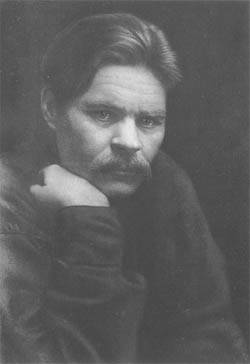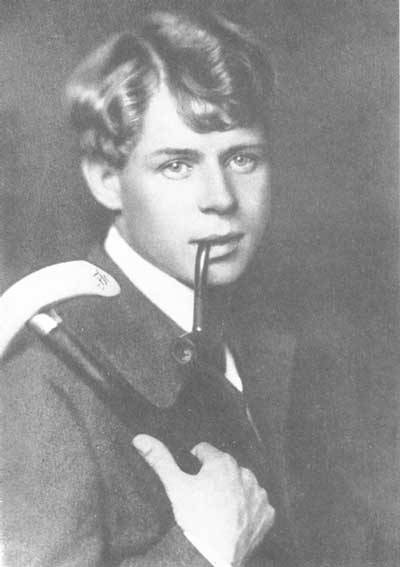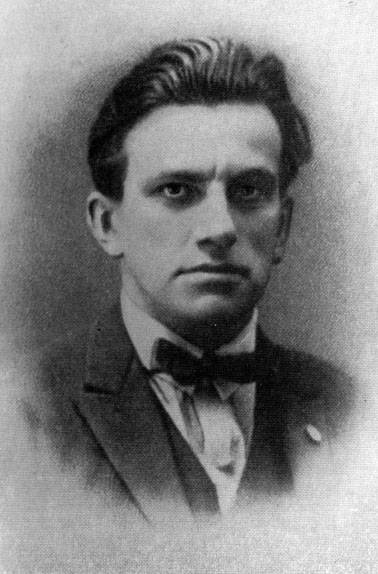

| Home | Our Leadership | Our Economies | Our Wars | Our Perspectives | Our Culture | Links | About |
By Elena Kornilova
Fascinated by the Broadway lights and saddened by the power of money and stee,.
Maksim Gorky, Sergey Yesenin and Vladimir Mayakovsky are classic authors of Russian literature of the beginning of the 20th century. They left a lot of great works, including well-known literary sketches and travel notes full of vivid descriptions of the places they visited.

In 1906 the writer Maksim Gorky visited one of the biggest cities in the United States and wrote a cycle of the sketches “In America.” He was imagining old America with its great people and aspiration for freedom, but he disliked New York City as soon as he saw it. The first features that he noticed were unattractive square buildings and a lot of iron. The city seemed to him like a set of big jaws with rough, black teeth, and a throat that swallowed people whole.The appearance of the essay, “The City of the Yellow Devil,” in the American publication Appleton's Magazine led to many reader responses. Senators retorted to Gorky's representation of the city, and workers expressed great humor toward his dystopic depiction. Gorky told about the shocking East Side with children eating near rubbish heaps while the culture of the Yellow Devil was developing in the center of the city. He described the discrepancy of obsessive wealth in some areas and absolute poverty in others. Gorky was sorry that American people who were able to reflect on their lives didn't need the beauty and pleasure for their minds and souls at all. The country that had political freedom had no freedom of the spirit. Everything was estimated in dollars. The writer was concerned that there was no culture, and that people were interested only in reading and watching violent stories and shows. He described different facial expressions of the citizens. Most passersby were either quiet or angry. Once, he met a man walking measuredly. There was something thoughtful about him, but indecisive at the same time. He looked like a thief, but Gorky was glad because that man felt himself alive.

Later, in 1922, another Russian writer came to the USA. Sergey Yesenin wrote: “I traveled a lot. But my vision was broken especially after visiting America.” He called his work “Iron Mirgorod” and mentioned that the poems of Mayakovsky were vapid as it was impossible to describe all the iron and granite power of New York in words. Yesenin was amazed by the lights of Broadway, and he compared the Russians with the Indians who were fenced out of world culture by the cinema businessmen. A whole chapter of his work was about him admiring the famous street with its billboards and glitter. Also, he devoted one chapter to his notes about other states. Yesenin described the landscapes west of New York City and found them to be very similar to Russia. The poet wrote about the way of life of black people, and how they influenced the music-hall world of America. He also remarked on the exceptional materialism and dominion of the dollar.

Another Russian writer Vladimir Mayakovsky traveled to America in 1925. He also was fascinated by the city lights. Mayakovsky wrote in “My discovering of America” about different layers of the society. He watched people he met more than the places he visited. He took note of how they ate, how they behaved. He also noticed that there were no sports in America. He mentioned that football players were tall and strong, but the 70 thousand spectators were sickly and small. It surprised him. The writer distinguished several features of the American society, including the technological advances being made and that America was growing fat, meaning that people who had two million dollars were considered to be young and not rich. He saw that money was everywhere.
All three well-known writers visited the United States in the beginning of the 20th century. Some of them were just traveling, some had to move away from the USSR, but all of them left their impressions on paper and depicted the moments that were emotionally and culturally important for them. We can use them to read and compare, to believe or just take into account, for research or only to entertain ourselves. But all three provide a vivid looking glass through which we can take a new look at America.